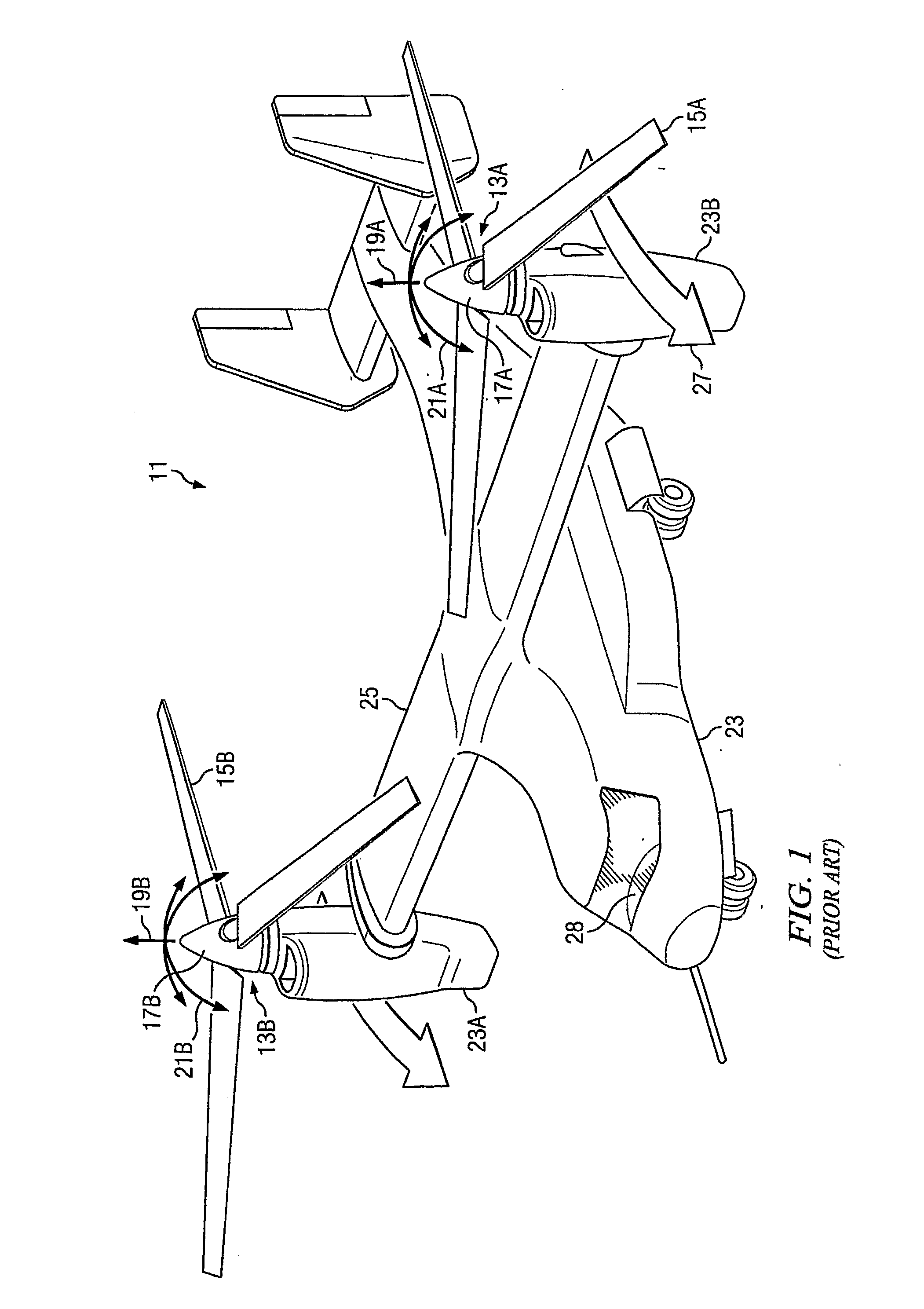Method and Apparatus for Flight Control of Tiltrotor Aircraft
a technology of tilt-rotor aircraft and flight control, which is applied in the direction of vehicle position/course/altitude control, process and machine control, instruments, etc., can solve the problems of additional roll moment, interference with aircraft precise vertical control, so as to reduce the response time to forward, increase the accuracy of aircraft control, and reduce the effect of position displacemen
- Summary
- Abstract
- Description
- Claims
- Application Information
AI Technical Summary
Benefits of technology
Problems solved by technology
Method used
Image
Examples
Embodiment Construction
[0034] Referring now to FIG. 5, a tiltrotor aircraft 34 is depicted in a hover above ground 35. Aircraft 34 is constructed in the same manner as aircraft 11, described above, but the flight control system (FCS) 36 in aircraft 34 uses the control methods of the present invention to automatically control the flight of aircraft 34 in response to control inputs by a pilot or electronic system. Rotors 37, comprising hub 39 and multiple blades 41, are powered by engines carried within nacelles 43. Nacelles 43 are rotatably mounted to the outer ends of wings 45, and wings 45 are affixed to fuselage 47. As described above, the pitch of each blade 41 is controlled by collective and cyclic swashplate controls (not shown) located within hub 39. As described herein, a single reference number may be used to refer to both left and right components (as viewed when seated in the aircraft) when the description applies to both components. Specific reference numbers are used for clarity to refer to sp...
PUM
 Login to View More
Login to View More Abstract
Description
Claims
Application Information
 Login to View More
Login to View More - R&D
- Intellectual Property
- Life Sciences
- Materials
- Tech Scout
- Unparalleled Data Quality
- Higher Quality Content
- 60% Fewer Hallucinations
Browse by: Latest US Patents, China's latest patents, Technical Efficacy Thesaurus, Application Domain, Technology Topic, Popular Technical Reports.
© 2025 PatSnap. All rights reserved.Legal|Privacy policy|Modern Slavery Act Transparency Statement|Sitemap|About US| Contact US: help@patsnap.com



